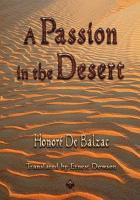Your visit in Paris has only just begun. You' ve just started to discover the charm of this old city. May the rest of your journey be unforgettable? When it is time to leave, you will go reluctantly. You will say with the French, "A bientot, Paris, a bientot!" (See you again soon, Paris!)
啊,美丽的巴黎!数百年来,这座美丽的城市吸引着全世界的目光。它的诱惑力和魅力迷倒了慕名而来的所有游客。
在哪里发现巴黎的魅力?是在法国历任统治者美化他们心爱的城市遗留的产物中吗?还是在著名的城堡、宫殿、雕像或纪念碑中,比如艾菲尔铁塔?可以在世界级的博物馆,如卢浮宫中找到吗?或许,巴黎的诱惑力就在于巴黎人民的热情和独特的风格吧。
游览巴黎,你不必把时间全部花在参观博物馆和纪念碑上。当然,这些确实值得你花点儿时间,可是暂且忘记它们一天吧。先用点儿时间去四处看看,体验一下巴黎的生活。你会发现它的魅力。
沿着塞纳河漫步一会儿,顺便欣赏一下沿岸美术品卖主的华美绘?。透过精致的铁门偷看一下悉心照料的花园。法国人对细节的独具慧眼,使得法国成为高品位的代名词,细细留意一下吧。你会在拱门或走廊的设计上、在小小的喷泉和怪异的阳台上,明白他们的独具匠心。无论你看哪里,都能发现生活中的物品变成了艺术杰作。
花点儿时间在宁静的公园里,坐在旧的长椅上休息一下。或者,在青青的绿草上躺一会儿。如果你想吃点儿什么,那就在路边的咖啡馆来点儿咖啡和糕饼吧。找个巴黎人闲聊一番,尽管不是很容易。这样一个国际性的人口大城市,地道的巴黎本地人已?很难找到了。
夜幕降临,迷雾在河岸上空升腾,巴黎的魅力也愈演愈烈。你可以听到附近露天音乐会上的乐曲:古典的、爵士的,有歌剧,有小调——法国的民间歌曲。巴黎人都喜爱自己的音乐。星空是他们的礼堂。在城堡和教堂,你也可以听到音乐会。巴黎的音乐永远没有休止符。
不要错过巴黎傍晚最精彩的活动——去吃顿大餐。巴黎人以其烹饪技术自豪。真的,这里的烹饪的确不错,举世闻名。美食佳肴是生活中不可或缺的乐趣。你需要一本专门的指南书,指导你从数百家出色的饭店中进行挑选。法国的首都以其每个地域特色美食、乳酪和畅销全国的美酒而自豪。如果你实在不知该点什么,那就索要推荐菜单吧。厨师总是将他们最拿手的列在上面。请记住,只有在巴黎的法国餐馆一饱口福,你才品尝了法国真实的风味。
享用完晚餐之后,到灯光闪烁的纪念碑走一趟。走过巴黎最古老的“新桥”,就到达了城市之岛。巴黎最著名的标志性建筑——圣母院就在前方若隐若现。站在圣母院前面的广场,在这里,你就正站在法国的中心。所有的距离都是从圣母院前面算起。法国的每条路都通向她的前门。所有的法国国王和领袖,都曾来到这里纪念重要的日子和表示感恩。圣母院不仅是巴黎的心脏,也是法国的心脏。
你在巴黎的旅行才刚刚开始,你才刚刚开始发现这座古城的魅力。你下面的旅程也一样难忘吗?等到归期来到,你将恋恋不舍。你用法语说:巴黎,后会有期!
身未动,心已远。这就是浪漫之都的魅力!
内卡河上木筏行
Rafting Down the Neckar
[美国]马克·吐温/Mark Twain
马克·吐温(1835—1910),美国杰出的小说家,美国文学史上最重要的作家之一,也是美国文学史上第一个用口语进行写作的作家,开创了一代文风,被福克纳称为“美国文学之父”。马克·吐温幼年家境贫寒,被迫放弃学业外出谋生。丰富的生活?历对他后期的创作影响很大。19世纪70年代到90年代是他创作的鼎盛时期,其代表作有《哈克贝里·费恩历险记》和它的姊妹篇《汤姆·素亚历险记》等。
When the landlord learned that I and my agents were artists, our party rose perceptibly in his esteem; we rose still higher when he learned that we were making a pedestrian tour of Europe.
He told us all about the Heidelberg road, and which were the best places to avoid and which the best ones to tarry at; he charged me less than cost for the things I broke in the night; he put up a fine luncheon for us and added to it a quantity of great light-green plums, the pleasantest fruit in Germany; he was so anxious to do us honor that he would not allow us to walk out of Heilbronn, but called up Gotz von Berlichingen' s horse and cab and made us ride.
I made a sketch of the turnout. It is not a Work, it is only what artists call a "study" — a thing to make a finished picture from. This sketch has several blemishes in it; for instance, the wagon is not traveling as fast as the horse is. This is wrong. Again, the person trying to get out of the way is too small, he is out of perspective, as we say. The two upper lines are not the horse' s back, they are the reins; there seems to be a wheel missing — this would be corrected in a finished Work, of course. That thing flying out behind is not a flag, it is a curtain. That other thing up there is the sun, but I didn' t get enough distance on it. I do not remember, now, what that thing is that is in front of the man who is running, but I think it is a haystack or a woman. This study was exhibited in the Paris Salon of 1879, but did not take any medal; they do not give medals for studies.
We discharged the carriage at the bridge. The river was full of logs — long, slender, barkless pine logs — and we leaned on the rails of the bridge, and watched the men put them together into rafts. These rafts were of a shape and construction to suit the crookedness and extreme narrowness of the Neckar. They were from fifty to one hundred yards long, and they gradually tapered from a nine-log breadth at their sterns, to a three-log breadth at their bow-ends. The main part of the steering is done at the bow, with a pole; the three-log breadth there furnishes room for only the steersman, for these little logs are not larger around that an average young lady' s waist. The connections of the several sections of the raft are slack and pliant, so that the raft may be readily bent into any sort of curve required by the shape of the river.
The Neckar is in many places so narrow that a person can throw a dog across it, if he has one; when it is also sharply curved in such places, the raftsman has to do some pretty nice snug piloting to make the turns. The river is not always allowed to spread over its whole bed — which is as much as thirty, and sometimes forty yards wide — but is split into three equal bodies of water, by stone dikes which throw the main volume, depth, and current into the central one. In low water these neat narrow-edged dikes project four or five inches above the surface, like the comb of a submerged roof, but in high water they are overflowed. A hatful of rain makes high water in the Neckar, and a basketful produces an overflow.
There are dikes abreast the Schloss Hotel, and the current is violently swift at that point. I used to sit for hours in my glass cage, watching the long, narrow rafts slip along through the central channel, grazing the right-bank dike and aiming carefully for the middle arch of the stone bridge below; I watched them in this way, and lost all this time hoping to see one of them hit the bridge-pier and wreck itself sometime or other, but was always disappointed. One was smashed there one morning, but I had just stepped into my room a moment to light a pipe, so I lost it.















